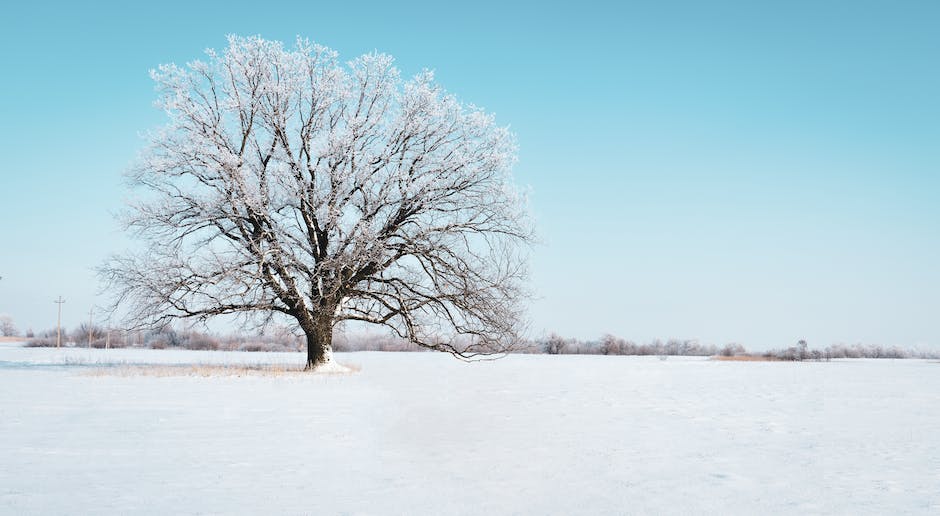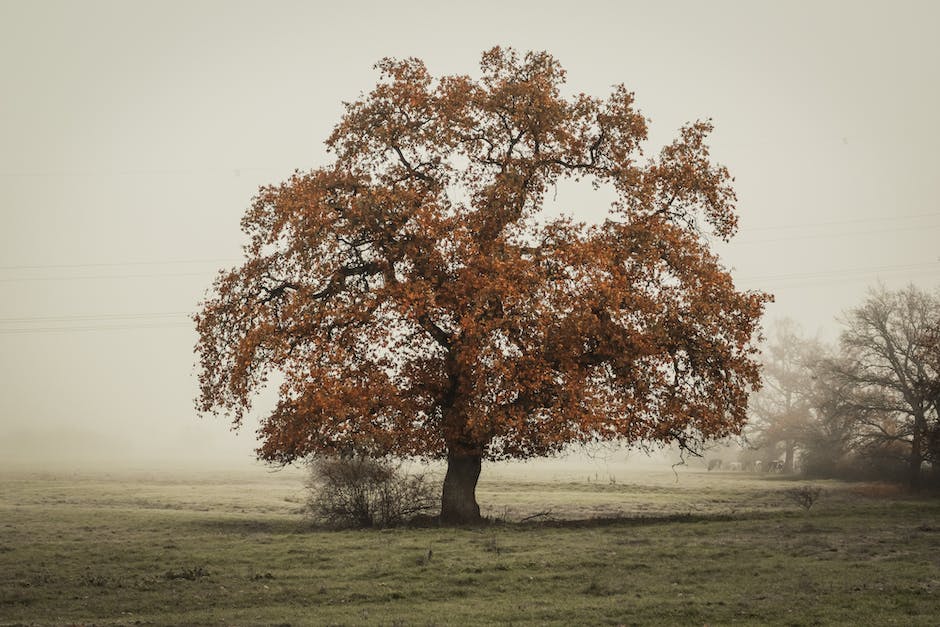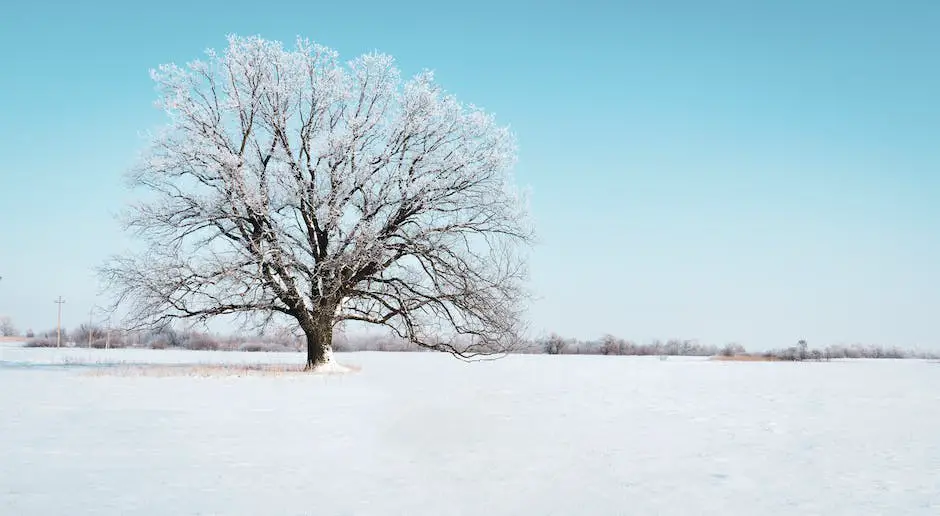Few trees are as iconic or important to the ecosystem as the oak tree. Oaks provide food and shelter for animals, help to prevent soil erosion, and provide us with things like acorns and lumber. But what do you do when one of these vital trees is dying? With a little knowledge and effort, it is possible to save a dying oak tree.
To save a dying oak tree, you will need to first determine the cause of the tree’s decline. Once the cause is determined, you can take steps to address the issue and save the tree. Some common causes of oak tree decline include drought, poor drainage, compacted soil, root rot, and insect infestations. Once the cause is determined, you can take steps to improve the tree’s growing conditions and help the tree recover.
Can an oak tree come back to life?
Once a tree has died, it is impossible to bring it back to life. While it may be possible to revive a sick or dying tree, it is often difficult to do so. If a tree is severely damaged or has been dead for a long time, it is unlikely that it can be revived.
An oak tree dying from old age will show several signs and symptoms. The leaves will turn yellow with greenish veins, the top branches will be dead, the bark will be decaying, and there will be fungus growth. Insects or animals may also be living in the tree.
Can you stop an oak tree from dying
If you have oak trees on your property, it’s important to be aware of the risk of oak wilt. This disease is deadly to oak trees, and once a tree is infected, there is no cure. The only way to prevent further infection and death is to remove the tree.
Oak wilt is most commonly spread through pruning, so it’s important to only trim oak trees during the proper tree pruning season, which is from mid to late fall to early spring. This will help to prevent the spread of the disease.
Leaves from diseased trees should be destroyed or placed in a compost pile to undergo heating to kill the fungus. A protective fungicide may be required if damage persists. Apply necessary sprays in the spring during leaf emergence and repeat in 7 to 14 days as needed.
How do you bring a live oak tree back to life?
It’s important to re-fertilize and apply fresh mulch around the base of a stressed tree. This will help to prevent new diseases from taking advantage of the weakened tree.
Infected trees may show symptoms of general tree decline, including branch dieback, loss of leaves, and yellowing or browning of leaves in summer. Trees weakened by drought stress, wounding, or other injuries are most susceptible.
What kills an oak tree?
Oak decline is a serious problem for oak trees in many parts of the world.Many factors can contribute to oak decline, including drought, defoliation, fungi that cause stem cankers or root diseases, and wood-boring beetles. The interaction of these factors may result in the decline and death of oak trees in a local or regional area. Oak decline can have a devastating impact on the ecology of an area, as well as the economy and local communities that depend on oak trees. In order to prevent and mitigate oak decline, it is important to understand the factors that can contribute to it and to take steps to protect oak trees from these risks.
If you’re planting an oak tree in late spring or summer, you’ll need to water it every day for the first week. After that, you can water it every other day for the next two weeks. After that, you can water it 2-3 times a week, depending on the temperature, soil type, sun exposure, humidity, and rainfall.
Why are so many oak trees dying
Oak wilt is a serious problem for oak trees. The fungal pathogen Ceratocystis fagacearum causes a vascular infection, meaning it blocks the water and nutrient “circulatory system” of the tree. This can lead to the death of the tree.
Drought stress can make leaves wilt and turn yellow or brown. Here are some other symptoms of drought stress: Borer insects, like the two-lined chestnut borer, make leaves turn brown, wilt and eventually fall off. Root rot causes browning, starting at the top of the tree.
Why are oak trees dying this year?
More heavy rain events can actually drench the roots of trees, causing a lack of oxygen. This can weaken the tree and make it more susceptible to diseases, such as root rot or insect infestations.
Oaks are a hardy tree that can tolerate a wide range of growing conditions, but they do need to be fertilized regularly to remain healthy and produce abundant leaves, flowers, and acorns. The best time to fertilize an oak tree is in the early spring and late fall, using a fertilizer that is specially formulated for use on these trees.
Can fertilizer save a dying tree
Fertilizers are an important part of tree care. Applying the right fertilizer can help your trees stay healthy and avoid problems. However, it is important to know how to apply fertilizer properly. Applying too much fertilizer can damage your trees.
Organic fertilizers are generally the best type of fertilizer to use. They release nutrients slowly, so they are less likely to damage your trees. However, they may not provide as much of a nutrient boost as artificial fertilizers.
In natural conditions, live oaks may not require fertilization. However, in a managed landscape, live oaks benefit from an appropriate fertilizer containing nitrogen, phosphorous and potassium. A 30:10:7 (ratio) slow release fertilizer is ideal and will last up to two years.
Can a live oak recover from oak wilt?
Thanks for bringing this to our attention. Once an oak tree is infected with the oak wilt fungus, the tree will die and there is no treatment to save the tree. However, treatment can be applied to the surrounding trees to prevent the spread of this disease. We’ll be sure to take the necessary precautions to protect our oak trees from this devastating fungus.
Systemic fungicides are a great way to protect trees from oak wilt, and Alamo is one of the best products on the market. By injecting the fungicide into the root flares, you can ensure that the tree takes up the product and it will be effective at preventing the disease.
How can you tell if oak trees are stressed
When a tree is stressed, it can exhibit a number of classic signs. Take a look at the tree’s canopy – is the foliage sparse, or are there a lot of dead branches? Are there cracks or splits in the trunk? Is the tree leaning? Does it have early fall colors or wilting, brown leaves? Leaf scorch can also be a sign of stress. If you see any of these signs, your tree may be in need of some extra care.
Abiotic factors are important contributors to tree health and can include maturity, site factors, and weather extremes. In residential settings, construction activity may cause root damage that weakens trees, making them more susceptible to a variety of biotic factors.
What kills oak trees quickly
Oak wilt is a terrible disease that is ravaging oak trees across the mid-west. The fungus grows in the vascular system of the tree, cutting off the supply of water and nutrients. This causes the leaves to discolorate, wilt, and drop off. Eventually, the tree will die. This disease is destroying entire forests of oak trees, and something needs to be done to stop it.
The disease causes leaves to turn dull green or bronze, can appear water-soaked, and wilt. Later, the leaves turn yellow and/or brown, curl around the midrib, and are shed at branch tips. Symptoms start from the tip and outer edges of leaves and move toward the midrib and base of leaves, often with a distinct margin (fig 3)
What does an overwatered oak tree look like
If you see new growth wilting or turning yellow or green, this is a sign that there is too much water present. Watch leaves carefully as well. They may look healthy and vibrant, but if they break easily and are overall fragile, they may be suffering from too much water.
Yes, oak trees should be watered if the soil is dry and crumbly. A deep watering will invigorate the drought-stressed tree and help it to recover.
What helps oak trees grow
The three main minerals that are important for the growth of an oak tree are phosphorus, potassium, and nitrogen. Phosphorus is important for the tree to create healthy roots and foliage. Potassium is important for the tree to create strong branches and leaves. Nitrogen is important for the tree to create food and energy.
When trees are infected with P ramorum, they may experience dieback of the shoot tips and wilting of the leaves. This can happen suddenly, as with red oaks, or over time. If you see shoot tip wilting, or “flagging,” it can be a sign that the tree is infected but not yet showing other symptoms, such as leaf loss. Keep an eye on these trees and be sure to remove them if they show any further signs of infection.
What to do if tree looks like it’s dying
If you think your tree is dying, you should call a tree removal company right away. The sooner you act, the better chance you have of saving your tree. Most tree services will be able to tell you if your tree is dying and whether or not it can be saved. Don’t delay – call a tree removal company today!
Prune back all dead or affected areas of the tree to avoid secondary infestations and disease. Provide the tree with one deep watering per week, allowing water to reach down 12 to 15 inches. Several light waterings will encourage roots to grow near the surface (augmenting the problem), stick to deep watering.
Warp Up
There really is no solid answer, as it depends on the tree’s condition and what is causing it to die. However, some general things that can be done to try and save a dying oak tree include: doing a deep root feeding, giving the tree proper amounts of water and nutrients, mulching around the base of the tree, and checking for and treating any pests or diseases. Additionally, it is important to make sure the tree has good drainage and isn’t being overcrowded by other trees or plants. If you are unsure of what is wrong with the tree, it is best to consult with a certified arborist or tree care specialist.
Although there are many ways to attempt to save a dying oak tree, there is no guaranteed method. If the tree is already showing signs of decline, it may be too late to save it. The best course of action is to consult with a arborist or tree specialist to determine the best way to proceed.
Jackson Hill is a passionate arborist with years of experience in the field of trees. He developed his fascination with trees at a young age, spending countless hours exploring the forests and climbing trees. Jackson went on to study arboriculture and horticulture at Michigan State University and later earned a degree in forestry from the University of Michigan.
With his extensive knowledge and expertise, Jackson has become a trusted authority on trees and their impact on the environment. His work has helped shape the field of arboriculture and he continues to be a leading voice in the industry.
